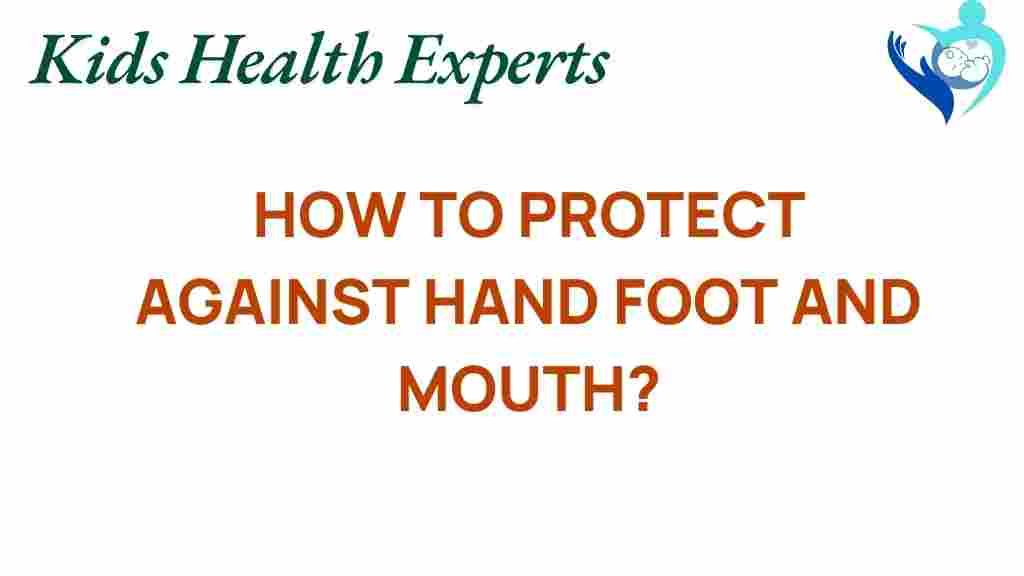Hand, Foot, and Mouth Disease: Understanding Prevention, Symptoms, and Treatment
Hand, Foot, and Mouth Disease (HFMD) is a common viral illness that primarily affects children, especially those under the age of 5. This contagious disease is characterized by sores in the mouth and a rash on the hands and feet. While most cases are mild and resolve on their own, understanding how to prevent HFMD, recognizing its symptoms, and knowing the proper treatment can help safeguard your family’s health. In this article, we will delve into the details surrounding Hand, Foot, and Mouth Disease, providing you with comprehensive information on prevention, symptoms, and treatment options.
What is Hand, Foot, and Mouth Disease?
Hand, Foot, and Mouth Disease is caused by viruses from the Enterovirus genus, with the most common culprit being the Coxsackievirus. This illness spreads easily, particularly in places where children are in close contact, such as daycare centers and schools. Understanding the nature of this disease is the first step in protecting your family.
Symptoms of Hand, Foot, and Mouth Disease
The symptoms of Hand, Foot, and Mouth Disease typically appear 3 to 7 days after exposure to the virus. Common symptoms include:
- Fever
- Sore throat
- Painful mouth sores
- Rash on hands and feet
- Loss of appetite
- Irritability in infants and toddlers
The mouth sores can be particularly painful, making it difficult for young children to eat or drink, which may lead to dehydration. If you notice these symptoms in your child, it’s important to monitor their condition closely.
Preventing Hand, Foot, and Mouth Disease
Prevention is the best way to protect your family from Hand, Foot, and Mouth Disease. Here are some effective strategies to reduce the risk of outbreaks:
- Practice Good Hygiene: Regular handwashing with soap and water is crucial. Ensure your children wash their hands after using the bathroom, before eating, and after playing outside.
- Avoid Close Contact: Keep your children away from others who are sick. If your child is infected, avoid sending them to school or daycare until they are no longer contagious.
- Disinfect Surfaces: Regularly clean and disinfect commonly used surfaces and toys, especially in places where many children gather.
- Teach Respiratory Hygiene: Encourage your children to cover their mouth and nose with a tissue or their elbow when they cough or sneeze.
- Stay Informed: Be aware of local outbreaks of Hand, Foot, and Mouth Disease. Schools and daycare centers often notify parents of any such occurrences.
Recognizing Outbreaks of Hand, Foot, and Mouth Disease
Outbreaks of Hand, Foot, and Mouth Disease can occur in clusters, particularly in daycares and schools. Here are some signs that an outbreak may be occurring:
- Multiple children showing symptoms simultaneously
- Notices sent home from schools or daycares regarding reported cases
- Increased reports of illness in the community
Staying alert to these signs can help in taking proactive measures to protect your family.
Treatment for Hand, Foot, and Mouth Disease
There is no specific antiviral treatment for Hand, Foot, and Mouth Disease, as it is usually self-limiting. However, the following supportive care measures can help alleviate symptoms:
- Pain Relief: Over-the-counter medications such as acetaminophen or ibuprofen can help reduce fever and relieve pain from mouth sores.
- Hydration: Encourage your child to drink plenty of fluids. Cold drinks or popsicles may soothe sore throats and encourage hydration.
- Soft Foods: Offer soft, bland foods that are easy to swallow, such as yogurt, applesauce, or mashed potatoes.
- Consult a Doctor: If your child has a high fever, shows signs of dehydration, or if you are concerned about their symptoms, consult a healthcare provider.
Step-by-Step Process for Managing Hand, Foot, and Mouth Disease
Here’s a step-by-step guide to managing Hand, Foot, and Mouth Disease if your child is affected:
- Identify Symptoms: Monitor your child for common symptoms such as fever, mouth sores, and rash.
- Isolate the Sick: Keep your child at home to prevent spreading the disease to others.
- Provide Comfort: Use pain relief medications and encourage fluids to keep them comfortable.
- Maintain Hygiene: Reinforce handwashing and hygiene practices within the household.
- Seek Medical Advice: Contact a healthcare provider if symptoms worsen or if you have concerns about your child’s health.
Troubleshooting Common Issues
Sometimes, parents may encounter challenges when dealing with HFMD. Here are some troubleshooting tips:
- Child Refusing to Eat or Drink: Offer cold fluids and soft foods to encourage intake. If dehydration is a concern, consult a doctor.
- High Fever: Monitor the fever and administer medication as directed. If the fever persists for more than a few days, seek medical advice.
- Rash Concerns: If the rash worsens or is accompanied by other symptoms, consult a healthcare professional.
Conclusion
Safeguarding your family against Hand, Foot, and Mouth Disease involves understanding the symptoms, implementing effective prevention strategies, and knowing how to treat the illness if it occurs. By maintaining good hygiene practices and staying informed about local outbreaks, you can significantly reduce the risk of infection in your household.
For more information on child health and safety, consider visiting the CDC’s official page on Hand, Foot, and Mouth Disease. Additionally, for a broader understanding of children’s health, check out our article on child health and wellness tips.
By taking proactive measures, you can ensure the health and safety of your children and protect them from Hand, Foot, and Mouth Disease.
This article is in the category Conditions and created by KidsHealthExperts Team
